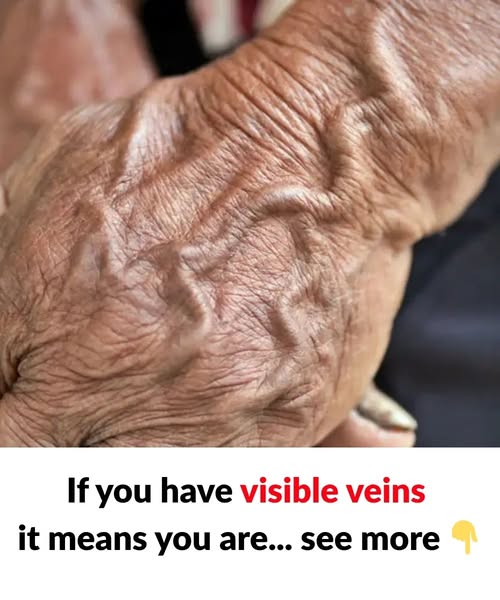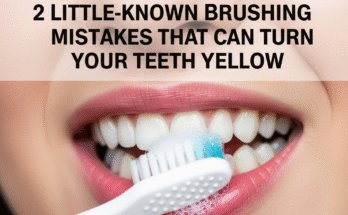
As we age, our bodies undergo many subtle changes — some expected, others surprising. One such change that often catches people off guard is the increasing visibility of veins, especially on the hands, arms, legs, and chest. While it can be alarming to suddenly notice more prominent veins, this is typically a normal part of aging and not usually a cause for concern.
Why Veins Become More Visible with Age
A major reason veins become more noticeable is the gradual thinning of the skin. As we get older, our bodies produce less collagen and elastin — the proteins that keep skin firm, elastic, and youthful. With less of these structural supports, skin becomes thinner and more transparent, revealing the veins underneath more clearly.
Another contributing factor is the loss of subcutaneous fat — the layer of fat just beneath the skin that helps cushion and conceal veins. As this layer diminishes with age, veins that were once hidden become more visible, particularly in areas like the hands and forearms where the skin is naturally thin.
Changes in Vein Structure and Circulation
It’s not just the skin and fat that change — veins themselves also undergo age-related transformations. Over time, the walls and valves inside veins can weaken, making them less effective at pushing blood back toward the heart. This can cause blood to pool, leading veins to swell and bulge, a condition commonly known as varicose veins. These are especially common in the legs and are more likely to occur in people who spend extended periods standing or sitting.
Aging also affects circulation in general. As we become less physically active, and as hormonal changes occur, blood flow can slow down. Calf muscles — which play a crucial role in pumping blood from the legs back to the heart — may not work as efficiently, further contributing to the appearance of swollen or darkened veins.
Genetics, Lifestyle, and Activity Levels
Genetics play a strong role in how visible your veins may become. If your parents or close relatives had prominent veins, you’re more likely to experience the same. Lifestyle factors can also accelerate vein visibility. Smoking, poor diet, and prolonged sun exposure all speed up skin aging and damage vein structures, making veins stand out more. UV radiation, in particular, breaks down collagen, which leads to thinner skin on sun-exposed areas like the hands and chest.
Interestingly, highly active individuals — especially those involved in weightlifting or endurance sports — often have more visible veins regardless of age. That’s because lower body fat and increased muscle mass push veins closer to the surface. During exercise, veins also expand temporarily to help regulate temperature and deliver oxygen to muscles, making them stand out even more.
When to Be Concerned
In most cases, visible veins are a harmless cosmetic change. However, if you notice veins becoming more prominent suddenly and they’re accompanied by symptoms like pain, swelling, warmth, redness, or skin discoloration, it’s important to seek medical attention. These could be signs of an underlying issue like a blood clot or vascular disease that requires prompt treatment.
Treatment Options
If the appearance of veins causes discomfort or self-consciousness, several cosmetic treatments are available. These include:
- Sclerotherapy – a procedure where a solution is injected to collapse and fade the vein
- Laser treatments – which use targeted light to reduce vein appearance
- Vein stripping or ablation – more invasive options for severe varicose veins
These treatments are generally safe and are pursued for aesthetic reasons rather than medical necessity.
A Natural Part of the Aging Journey
Visible veins are often simply a sign of aging — not something to fear, but something to understand. Rather than viewing them as flaws, they can be seen as part of the natural story our bodies tell with time. With awareness of the causes and options available, we can navigate these changes with confidence, acceptance, and, if we choose, action.


